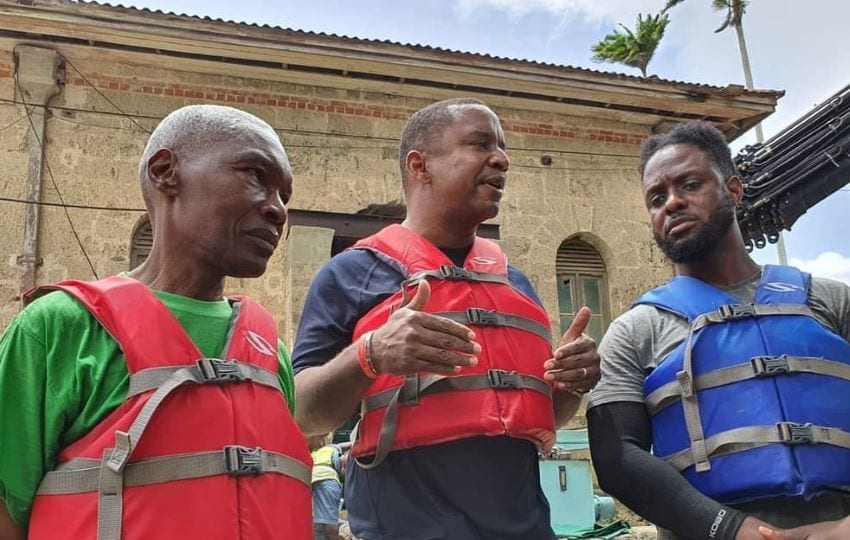
Minister of Energy and Water Resources, Wilfred Abrahams, believes it was necessary to tour the cave, located at the Barbados Water Authority’s (BWA) Bowmanston Pumping Station in St. John, to gain a better understanding of the challenges being experienced there.
“I like to understand what it is I am talking about … because I can best explain it to the public, or to my fellow ministers if I understand, and the other thing was, I keep passing information to the press second-hand, so I get it from Dr. Mwansa, I then pass it to you.
“It was also critical for the press to understand, because realistically, for this message to get home to Barbadians I can say it, but I need you to carry it. You may write the story based on what I say, but I’m sure that those who went down the whole way through, it is one thing to hear it, it’s a next time to see it,” Minister Abrahams said.
Now having being on the tour, the Minister responsible for the BWA, hopes that the media could convey the deficit of water being experienced at the cave, and also the process that occurs between capturing water when the rain falls and how that water eventually makes it to our taps.
Minister Abrahams emphasized that this would assist in answering why the water levels are low or the taps dry, if the rain recently fell.
“People need to understand something; there are a number of factors at play, as Dr. Mwansa indicated. It normally takes 90 days for the water that hits the surface of the earth to get through into our aquifer.
“Sometimes, if there is excessive rainfall and flooding it might find fissures of direct connection into the aquifer, but a normal filtration scheme of things takes 90 days. So, when you see the rain falling the impact of that rain is generally not going to be felt for about a couple of months.”
He also highlighted that one of the largest consumers of the island’s water supply is the agriculture sector, and when the rain falls, farmers don’t have to irrigate their crops.
But during the dry season and the current drought situation, farmers have to utilise water from the island’s distribution system to irrigate their crops, and that impacts the amount available for domestic consumption.
Stressing that climate change has played a major role in the reduction of rain fall and drought situations across the globe, Minister Abrahams encouraged the media to carry the message about the disparity of water levels the authority is experiencing at its pumping facilities, and to promote ways the public can conserve the way they use water.
“Water is like the new oil, so we need to stop wasting water; we need to follow the water authority’s tips,” Minister Abrahams added, which could assist in conserving water, so residents in elevated parishes can have a better supply of water.
To address the issues facing the BWA over the next two to three years, the BWA will seek to supplement the supply of water with projects that include the Vineyard project; construction of new reservoirs and booster stations; replacement of mains; the installation of two temporary package desalination plants and the supply of industrial desalination water.
